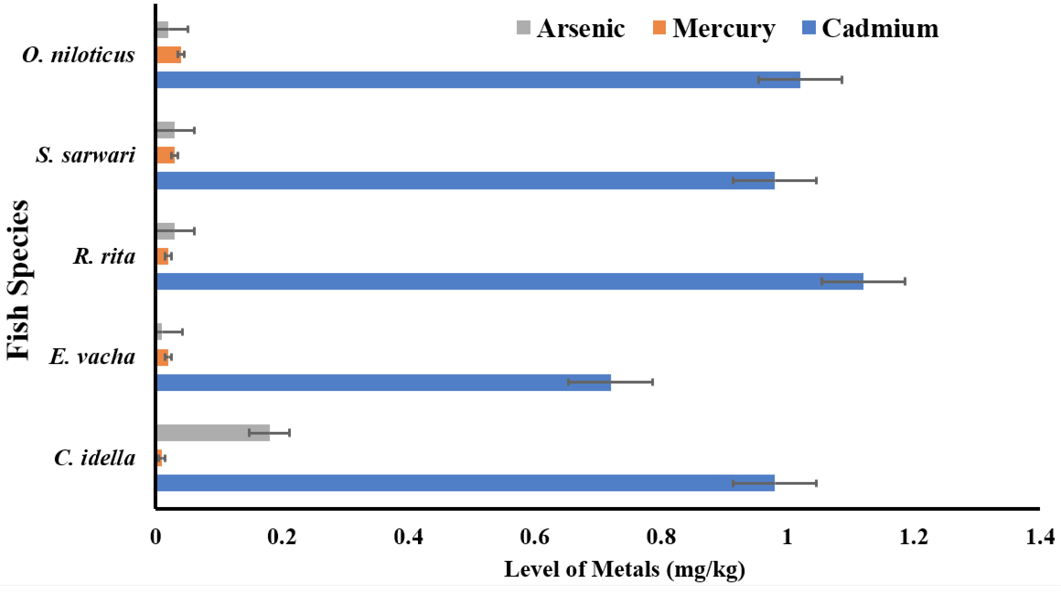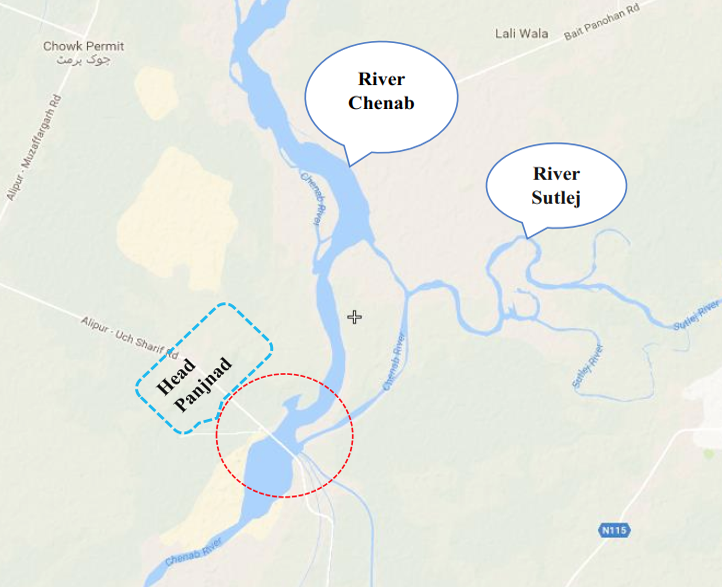Toxic Trace Metals Assessment in Selected Organs of Edible Fish Species, Sediment and Water in Head Punjnad, Punjab, Pakistan
Toxic Trace Metals Assessment in Selected Organs of Edible Fish Species, Sediment and Water in Head Punjnad, Punjab, Pakistan
Saeed Fatima1, Khalid Javed Iqbal1, Usman Atique2,3*, Arshad Javid4, Noor Khan2, Sonia Iqbal2, Hamid Majeed5, Hamda Azmat2, Bakhat Yawar Ali Khan6, Irfan7, Muhammad Tausif Shahid1, Gulnaz Afzal1
Study area map shows the location of the Head Punjnad and the confluence point of River Sutlej and River Chenab.
Loads of heavy metals (As, Hg and Cd) detected in five fish species in Head Punjnad.
Dendrogram showing the clustering of metals in fish, water and sediments in Head Punjnad.
M,Muscles; G, Gills; Cd, Cadmium; Hg,Mercury; As, Arsenic;W, Water; S, Sediments.
Study area map shows the location of the Head Punjnad and the confluence point of River Sutlej and River Chenab.











